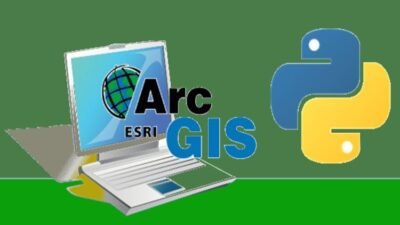If you’re eager to dive into the world of geospatial analysis and automation, "Essentials for PyQGIS: Python for Geospatial Automation" on Udemy offers a fantastic opportunity. This course expertly envelops the fundamentals of PyQGIS—QGIS’s Python API—enabling you to harness the power of Python to automate geospatial tasks seamlessly. Whether you’re a budding data analyst or an established GIS professional, this course is structured to enhance your skill set dramatically.
What you’ll learn
Throughout the course, participants will acquire essential skills that blend Python programming with geospatial capabilities. Key learning outcomes include:
- Understanding QGIS Interface: Familiarization with the QGIS environment, including essential tools and functionalities.
- Python Programming Basics for GIS: A solid foundation in Python programming concepts tailored for geospatial applications.
- Automating Workflows: Techniques to automate repetitive tasks using PyQGIS, ultimately enhancing efficiency.
- Working with Vector and Raster Data: Insights into how to manipulate and analyze both vector and raster datasets.
- Creating Custom Plugins: An engaging introduction to developing tailor-made QGIS plugins that can streamline unique tasks.
- Error Handling and Debugging: Strategies for troubleshooting and debugging code, ensuring smooth operation in your automation projects.
By the end of the course, learners will feel confident applying their newfound skills to real-world GIS projects.
Requirements and course approach
This course is designed to be accessible for individuals with a minimum of prior experience in Python or GIS. While there are not strict prerequisites, familiarity with basic programming concepts or geospatial analysis can enhance the learning experience.
The course adopts a practical approach, combining theoretical lessons with hands-on exercises. The modules encompass interactive content, allowing students to follow along with real-time coding examples. The instructor provides clear explanations and encourages active participation, making learning both engaging and effective. There are numerous downloadable resources, including sample datasets and code snippets, which aid learners in applying what they’ve learned.
Who this course is for
"Essentials for PyQGIS" caters to a wide audience, making it suitable for:
- Beginners in GIS: Individuals new to geospatial analysis who wish to incorporate automation into their workflows.
- Intermediate Python Users: Those with basic Python skills looking to apply them in geospatial contexts.
- GIS Professionals: Experienced GIS analysts and cartographers wanting to enhance their modeling and automation capabilities with Python.
- Students in Environmental Science or Geography: Learners interested in utilizing geospatial technology for academic projects.
The course supports a variety of learners by providing clarity, engaging material, and relevant examples across heterogeneous applications.
Outcomes and final thoughts
Once you complete this course, you’ll emerge equipped with the capability to automate geospatial processes effortlessly using PyQGIS. Whether it’s streamlining data analysis or creating custom scripts for specific projects, you’ll have the tools at your disposal to enhance your productivity and efficiency. You’ll also join a community of like-minded learners and professionals, expanding your network beyond the course.
Overall, "Essentials for PyQGIS: Python for Geospatial Automation" is a gem of a course, deftly blending the intricacies of Python programming with the dynamic world of GIS. It encourages exploration and experimentation, paving the way for innovative applications and solutions. If you’re ready to elevate your geospatial skills, this course is undoubtedly a worthy investment in your personal and professional development.





